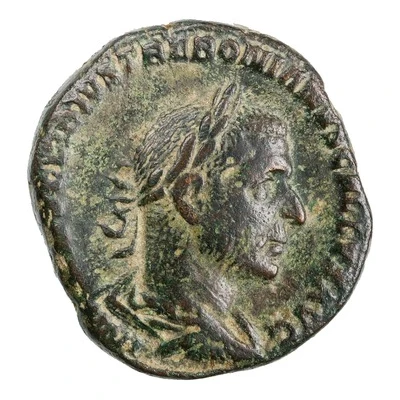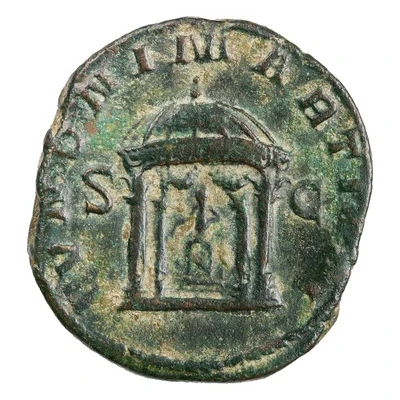


© American Numismatic Society (ANS)
Sestertius - Trebonianus Gallus IVNONI MARTIALI S C; Juno
| Bronze | 17.6 g | 28 mm |
| Issuer | Rome › Roman Empire (27 BC - 395 AD) |
|---|---|
| Emperor | Trebonianus Gallus (Gaius Vibius Afinius Trebonianus Gallus) (251-253) Volusianus (Gaius Vibius Volusianus) (251-253) |
| Type | Standard circulation coin |
| Years | 251-253 |
| Value | Sestertius (⅛) |
| Currency | Antoninianus, Reform of Caracalla (AD 215 – 301) |
| Composition | Bronze |
| Weight | 17.6 g |
| Diameter | 28 mm |
| Shape | Round (irregular) |
| Technique | Hammered |
| Orientation | Variable alignment ↺ |
| Demonetized | Yes |
| Updated | 2024-10-05 |
| Numista | N#283627 |
|---|---|
| Rarity index | 100% |
Reverse
Juno, draped, seated left, holding corn-ears in right hand and globe in left hand.
Script: Latin
Lettering: IVNONI MARTIALI S C
Translation:
Iunoni Martiali. Senatus Consultum.
Juno, the mother of Mars. / Juno, the warmonger. Decree of the senate.
Comment
Mass varies: 16.01–21.69 g;Diameter varies: 26–29.65 mm;
Example of this type:
American Numismatic Society (ANS)
Source:
Online Coins of the Roman Empire (OCRE)
Interesting fact
One interesting fact about this coin is that it features a rare representation of the Roman goddess Juno on the reverse, while the obverse bears the image of Emperor Trebonianus Gallus. This is unusual because Juno was not typically depicted on coins during this time period, and it suggests that the mint officials may have been experimenting with new designs or trying to promote the cult of Juno. Additionally, the coin's weight of 17.6g is slightly heavier than the standard weight for a sestertius, which was typically around 15-16g, indicating that it may have been minted using a different alloy or manufacturing process.

